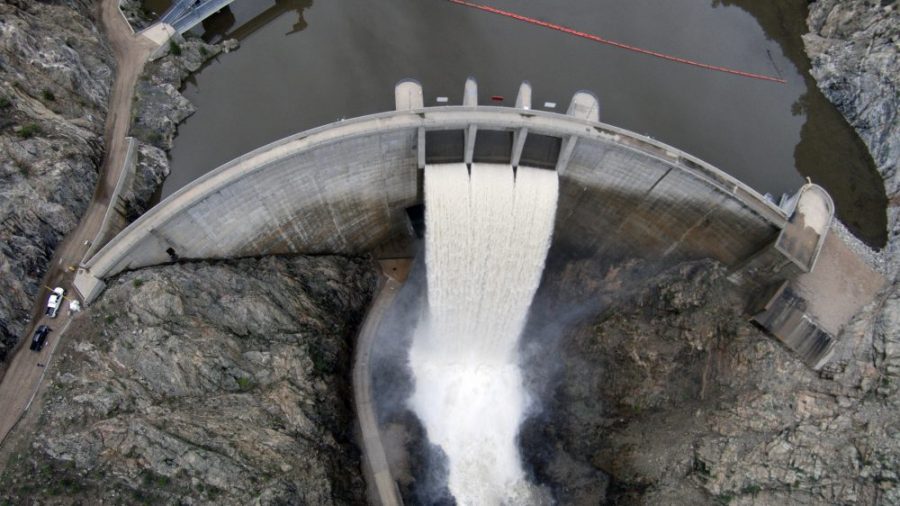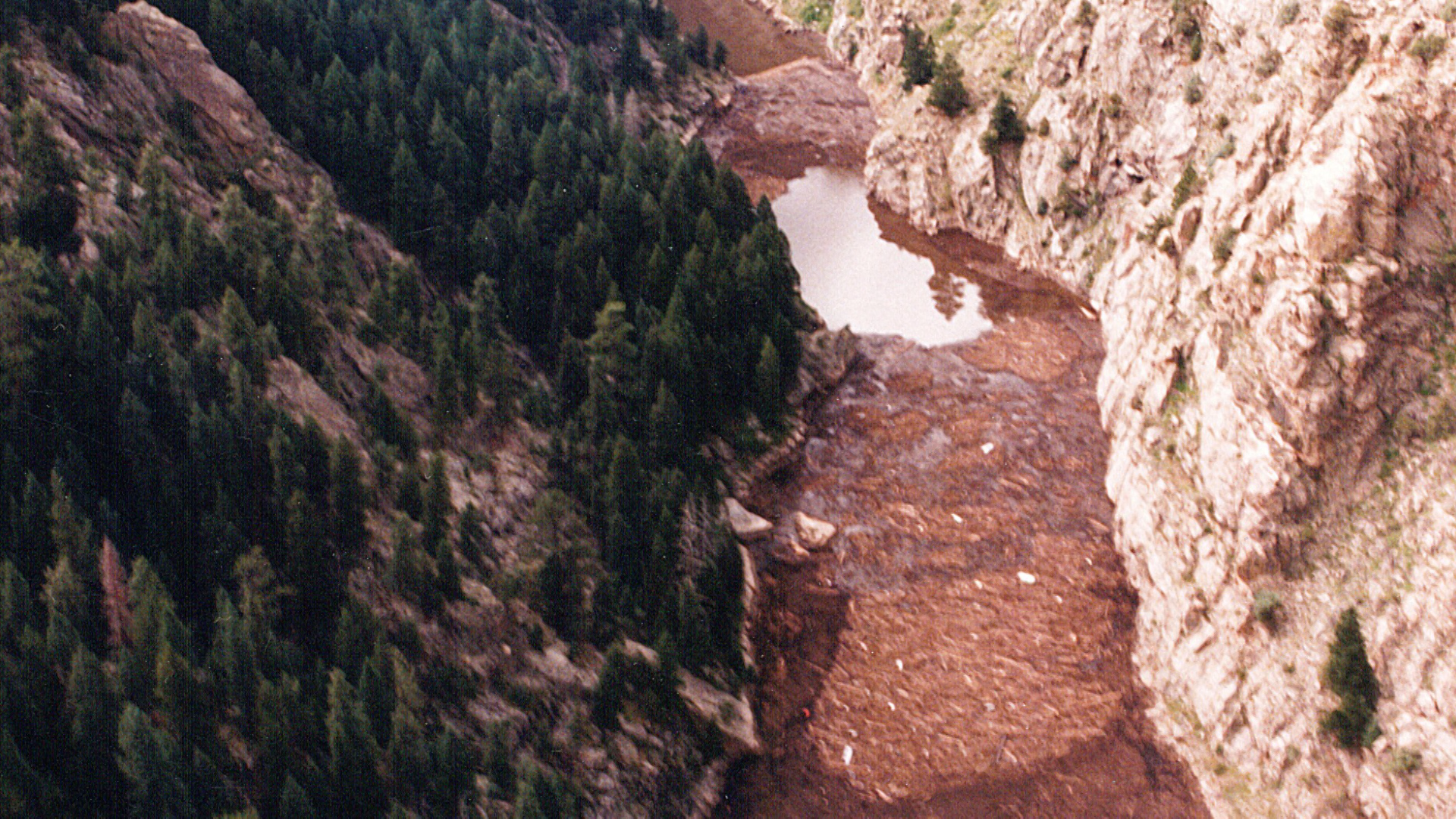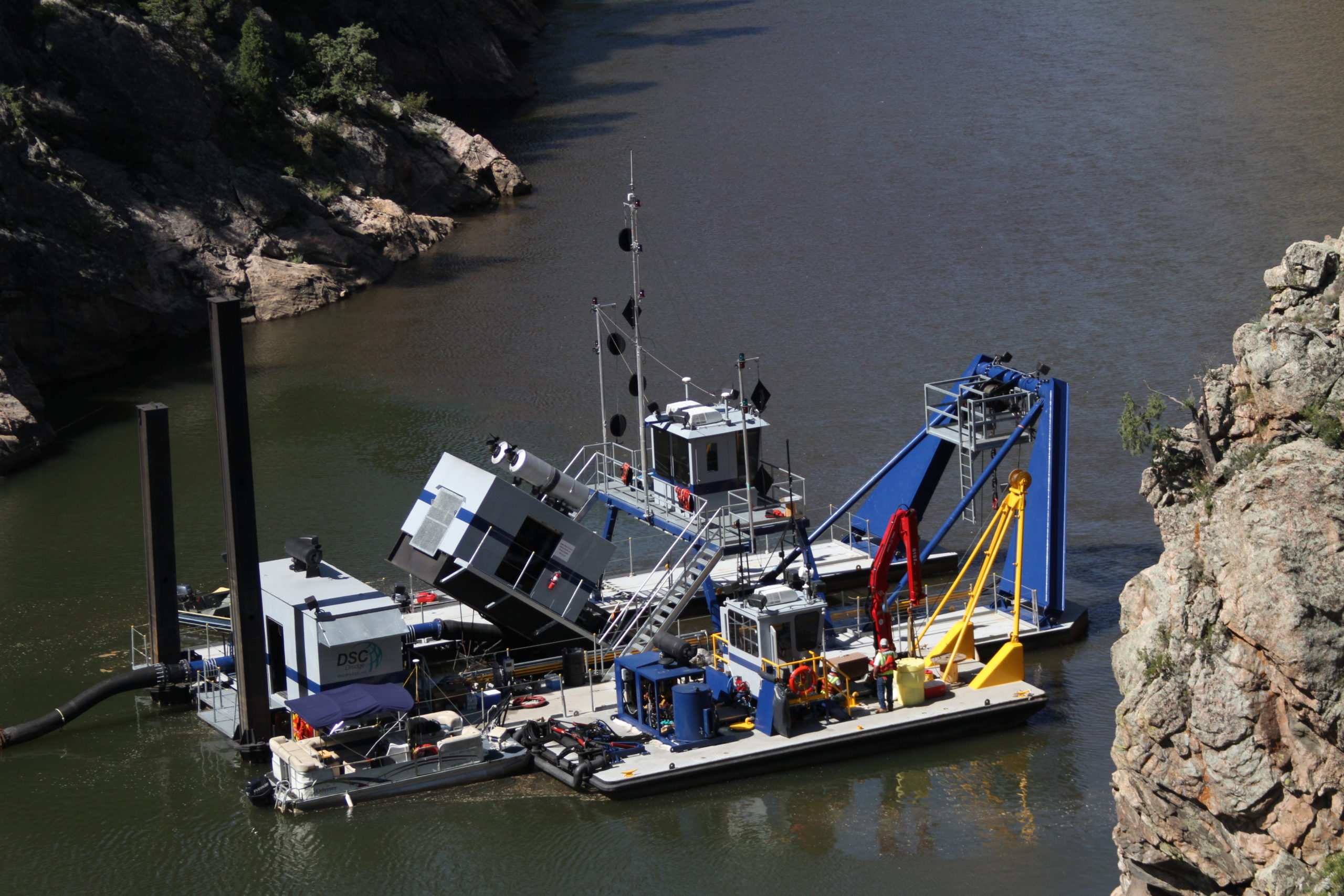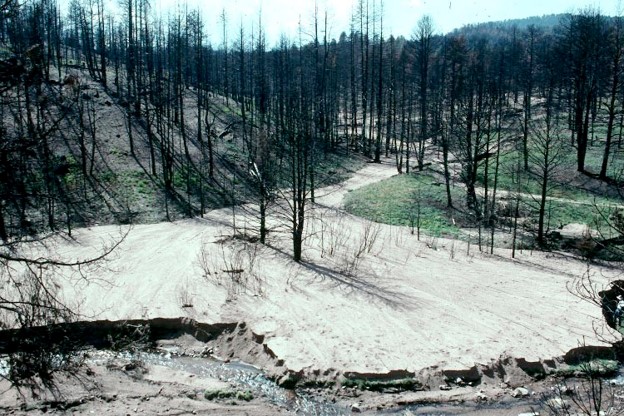
It’s a dirty problem, but somebody’s gotta solve it
Heavy sediment flows, exacerbated by wildfire and intense rainfall, are sliding off the foothills west of Denver into the South Platte River and accumulating in Strontia Springs Reservoir.
The equivalent of thousands of dump truck loads per year of the coarse material are making their way into the reservoir, reducing the water it can store and potentially clogging up the dam’s operations.
Now, Denver Water engineers and watershed scientists are weighing how best to address the issue, looking for methods to manage the sediment flows many decades into the future.
The reservoir plays a critical role for the metro area. More than 80% of the water that Denver Water uses to supply 1.5 million people flows through Strontia, located six miles up Waterton Canyon to the southwest of Denver.
For Denver Water, the reservoir is a key staging area of sorts. Water is held there before it is routed for treatment at Marston and Foothills plants in preparation for customers.
“Sustaining the reservoir for future generations will be a long-term challenge for us,” said Doug Raitt, engineering manager at Denver Water. “We can address this, but it will take smart engineering, big thinking and enduring commitment.”
The problem is not a new one, not for Denver Water, nor for many reservoirs around the world. Water and wind have always carried sediment off the landscape. When it flows into rivers, sediment inevitably and inexorably stacks up behind dams. But not all scenarios are the same.
In some cases, the reservoirs are so massive, it will take hundreds of years — or more — for the dirt to have any significant impact on storage space. In other cases, reservoirs are situated in areas where far less soil and debris is prone to slide off the earth and into rivers and streams. Some of Denver Water’s higher elevation reservoirs, such as Antero or Dillon, fit this description.
But in a relatively small reservoir like Strontia Springs, the relentless delivery of sediment is already a serious matter. Both the South Platte River, as well as its North Fork wind through regions heavy with decomposed granite, a highly erodible material exposed when wildfire burns tree and plant cover. The heavy rains that follow then easily loosen it from newly barren slopes.
There have always been sediment flows in the South Platte River system, but it wasn’t until the 1996 Buffalo Creek fire that burned 12,000 acres immediately upstream of Strontia Springs that the significance of the problem became clear.
In flash flooding that arrived two months after the fire, severe erosion of the decomposed granite delivered an estimated 160,000 cubic yards — some 17,000 dump truck loads — into Strontia Springs.
The cycle has repeated itself in fires since then, including the infamous Hayman Fire in 2002. That fire, the largest by acreage recorded in Colorado, burned 138,000 acres surrounding Cheesman Reservoir, another critical water storage facility for Denver Water about 20 miles upstream from Strontia.
“I’ll always remember the devastation,” said Bobby Padilla, a Denver Water employee who worked at Cheesman for three years after the fire, helping with restoration efforts. He recounted the work in a 2017 TAP article: “The burnt trees looked like telephone poles with nothing on them, and everything was burnt and dark. When it rained, there were rivers everywhere — there was nothing to slow down the water.”
Long before operations began at Strontia Springs Reservoir, in 1983, sediment would stack up behind the Platte Canyon Diversion Dam, three miles further downstream from the future Strontia.
In a typical year, 30,000 to 40,000 cubic yards would accumulate and then be sluiced over a period of several days, using as much as 3,000 acre-feet of water to carry the sediment downstream.
After Strontia Springs began operation, similar volumes of sediment piled up in a far larger reservoir. A typical year saw roughly 50,000 cubic yards of dirt stack up. Then, the big wildfires saw far larger totals.
Today, about 13% of the reservoir space has been filled in by sediment. That’s enough space for the same amount of water that could serve as many as 4,000 households.
Denver Water made its first major effort to remove sediment in 2010. The endeavor was complex, requiring pumps and pipes to transport the sediment roughly six miles down Waterton Canyon to a storage site.
It was only partially successful, drawing out 228,000 cubic yards of sediment — a figure less than half the originally targeted volume — at a cost of $18.5 million. Even so, the project did pull roughly the equivalent of five years of average sediment accrual from the reservoir.
“We had hoped for greater impact from that project, but we learned a great deal from it — experience that will help us as we plan for long-term sediment removal,” Raitt said.
Last year, a team of experts from Denver and Aurora conducted a detailed analysis of the sediment challenge. They found, on average, about 5,000 dump truck loads of sediment per year settle into the reservoir (equal to about 30 acre-feet, or water for 120 households).
The team analyzed different approaches to managing the issue and agreed on a long-term plan that would involve managing and reducing sediment flows upstream, combined with periodic sediment removal from the reservoir. What kind of specific methods would be used to accomplish the plan will be the focus of future discussions.
Reducing sediment flows at the source is already a key component of a major partnership between Denver Water, the U.S. Forest Service, Colorado State Forest Service and Natural Resources Conservation Service.
That initiative, the From Forests to Faucets program, is allocating $66 million — half from Denver Water — to both reforesting burned landscapes and restoring overgrown, fire-prone areas. That’s work that is expected to curb the potential intensity of future fires and reduce the amount of soil that would erode off burned landscapes. Plans through 2021 call for treating nearly 90,000 high-priority acres.
“Diminishing the severity and size of wildfires will go a long way toward protecting our watersheds,” said Christina Burri, who oversees Denver Water’s work on From Forests to Faucets. “Smaller, less intense burns mean reducing exposed soils and preserving the vegetation that holds soil in place and away from our waterways. But wildfires are not the only source of sediment to Strontia Springs.”
More forest management and restoration of burned areas will be key, as will addressing instability in streambanks and on hillslopes due to development, unpaved roads, social trails, and other land uses, Burri said.
Removing existing sediment will also play major a role, and Denver Water engineers believe they can learn from experience over the last decade.
“Our efforts to date have been valuable in informing how we might improve our work in the future,” Raitt said. “This will be a long-running process, and we know we’ll get smarter as we move forward.”





